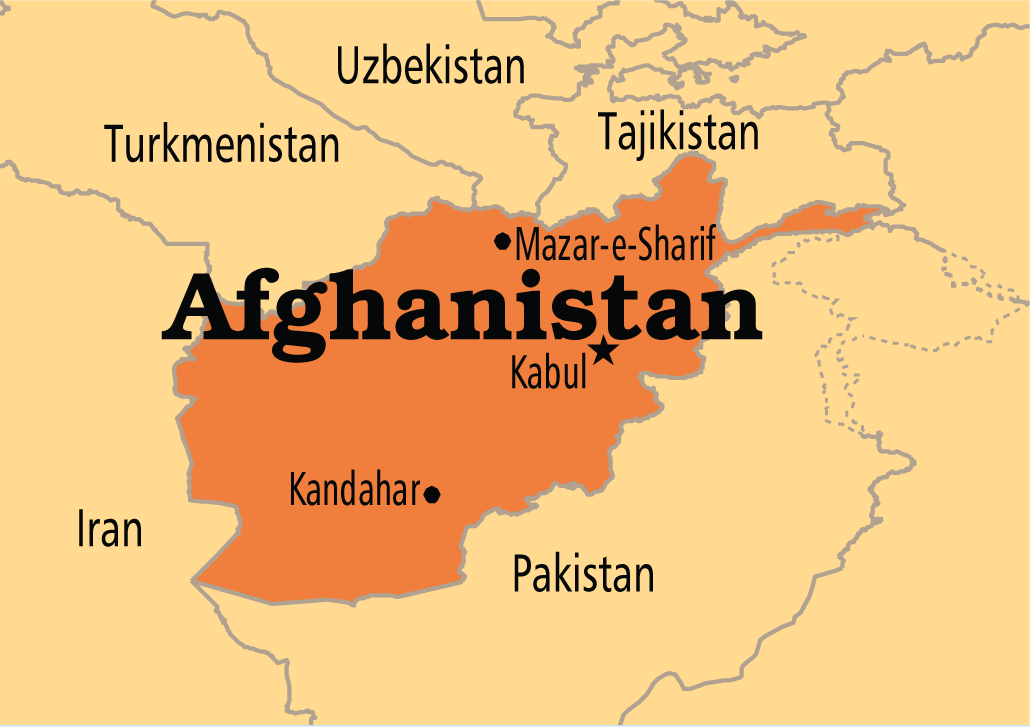International Relations
USA-Taliban Peace Deal
Why in News
The United States has signed a historic deal with Taliban insurgents that could pave the way for ending the 18-year-war in Afghanistan.
- The deal was signed in Doha (Qatar) and thus termed as Doha Agreement.
- India has welcomed the signing of the U.S.-Taliban peace deal by accepting an invitation to attend the meeting for the same in Doha.
Key Elements of the Deal
- The agreement set out a course for the next 14 months.
- Comprehensive Ceasefire between the Afghan Government and Taliban.
- Timeline for the withdrawal of all foreign forces from Afghanistan will be carried out, provided the Taliban adhere to their security guarantees and ceasefire.
- The prevention of the use of Afghanistan by any group or individual against the security of the United States and its allies.
- The facilitation of an intra-Afghan dialogue.
- The participants of intra-Afghan negotiations will discuss the date and modalities of a permanent and comprehensive ceasefire, including agreement over the future political roadmap of Afghanistan.
- In turn, the Taliban has demanded the release of 5000 fighters from Afghan-run jails.
Peace Deal and the Possible Consequences
- Taliban has the ultimate goal of imposing Sharia in their respective regions. This is in conflict with what the people in Afghanistan want.
- Afghanistan has its own Constitution and people want to be governed as per the Constitution. This will make any peace deal that they would have, unsustainable.
- The Taliban will hardly share power with the Afghan Government. Thus it is quite possible that even after the peace deal, the country will be back to civil war again.
- Then, the world will face twin challenges in Afghanistan: ISIS and Taliban.
India’s Stand
- India has been always supportive of the inclusive peace process, specifically Afghan-owned, Afghan-led and Afghan-controlled.
- The participation of the Afghan government’s delegation during the Doha agreement as well as the upcoming intra-Afghan peace negotiations would be following the path desired by India.
- The deal has reiterated India’s commitment to Afghanistan’s pursuit of “sustainable peace and reconciliation”.
- Thus, India has accepted the Doha Agreement(2020).
Possible Issues for India
- Security of India:
- The deal mentions about prevention of the use of Afghanistan by any group against the security of the United States and its allies. However, it is unclear whether India, which is not a U.S. ally, is included in this clause, and whether Pakistan-backed groups that threaten India, would still operate in Afghanistan.
- Benefit for Pakistan:
- The deal also promises to take Taliban leaders off the UN Security Council’s sanctions list, which could considerably bring down the number of terrorists harboured by Pakistan. This might benefit Pakistan during the June 2020 FATF Plenary.
- Sidelining of Intra-Afghan Dialogue:
- The U.S. has committed to clear five bases and withdrawal of troops and it intends to submit to the Taliban-led government. Thus, priority to future Taliban led government may sideline the “Intra-Afghan” dialogue and India’s support for the election process for leadership in Afghanistan.
- One-sided Deal:
- The deal is more burdened with the Taliban demands, while the actual terms of the ‘peace deal’ are yet to be negotiated between the Taliban and the Afghan side, facilitated by the U.S. and thus deal seems to be a one-sided deal.
Background
- The war in Afghanistan was launched by the US in 2001 after the 9/11 attack. The US-led coalition aimed to overthrow the Taliban.
- However, the war in Afghanistan got derailed as the U.S. shifted focus and resources towards Iraq from 2003 onwards.
- The end objective of a stable and peaceful Afghanistan began to recede as the Taliban launched their insurgency in 2005 after they had recovered, regrouped and refinanced themselves from their sanctuary in Pakistan.
- Since then, the insurgency has gathered momentum and also exposed the U.S. 's policy weaknesses.
- After taking over in 2009, President Barack Obama authorised a surge in U.S. troop presence with the objective to gain a decisive victory over the insurgency. He simultaneously announced the drawdown of forces would commence in 2011, and by 2014 the Afghan security forces would take charge of all combat operations.
- However, this only encouraged the Taliban insurgency and exposed the shortcomings of the Afghan army and the police forces, in terms of numbers, training and equipment to deal with the post 2014 situation.
- In 2014, the U.S. announced the withdrawal of the bulk of soldiers but a few thousand U.S. soldiers were to stay behind to “advise, train and assist” the Afghan security forces under Operation Resolute Support.
- In 2017, the U.S. President Donald Trump laid out a strategy for “Afghanistan and South Asia”.
- His policy was different from those of his predecessors as it stated that American involvement in Afghanistan was “not for nation building” but was limited to “killing terrorists.”
- He called this policy “Principled Realism” - with a shift from a time-based approach to one based on conditions. This policy was based on two pillars:
- Military Involvement: The additional troops which would serve two roles: counterterrorism missions and training the Afghan forces.
- Political Involvement: A negotiated political settlement with the Taliban, if the situation moves in that direction.
- Since October 2018, Taliban representatives and US officials have been meeting to chalk out a peace treaty.
Way Forward
- Achieving lasting peace in Afghanistan will require patience and compromise among all parties. And thus talking only with the Taliban is a short-sighted policy.
- To resolve conflict within Afghanistan, the battlefield needs to be isolated i.e. external support to the terrorist activities needs to be abandoned. Also, the countries need to keep their respective interests aside, to build peace in the region.
- The US needs to make its policy vis-a-vis Afghanistan clear.
- India and Central Asian Republics can help in establishing peace in the region.
- More militancy is witnessed in the region where the state fails to deliver. Thus, administrative reforms within Afghanistan are the need of the hour.
Geography
Water Crisis in Himalayan Region
Why in News
Recently, several towns were surveyed in the Himalayan region of Bangladesh, Nepal, India and Pakistan to understand the challenges of the water crisis in urban areas of these regions.
Key Points
- Eight towns in the Himalayan region of Bangladesh, Nepal, India and Pakistan were nearly 20%-70% deficient in their water supply.
- The places surveyed are extremely dependent on springs (ranging between 50% and 100%) for their water, and three-fourths were in urban areas.
- Rural areas have typically garnered much of the attention in terms of development and issues surrounding urban environments have been sidelined.
- Factors responsible:
- Unplanned urbanisation
- Climate change
- Across the region, the encroachment and degradation of natural water bodies (springs, ponds, lakes, canals, and rivers) and the growing disappearance of traditional water systems (stone spouts, wells, and local water tanks) are evident.
- Although only 3% of the total Hindu Kush Himalayan population lives in larger cities and 8% in smaller towns, projections show that over 50% of the population will be living in cities by 2050, placing stress on water availability.
- Under current trends, the demand-supply gap may double by 2050.
Water Crisis in India
- India tops the list of countries with the most number of people living with water scarcity.
- As many as one billion people in India live in areas with physical water scarcity, of which 600 million are in areas of high to extreme water stress.
- Approximately 330 million people from 302 districts were affected by droughts in 2016.
- Over 21% of the country’s diseases are water related. In 2015, India lost over 1 lakh children under the age of five to diarrheal diseases.
- As per a report by NITI Aayog, Bengaluru will soon be among one of the 11 cities in the world to run out of ground water.
- The report also states that the ‘Day Zero’ will hit Bengaluru and 20 other major cities (including Delhi) in India by the year 2020 affecting an estimated 100 million people.
Day Zero Situation
- Day Zero is a situation when taps in a region start running dry. It is a situation when there will be no water in the taps and the use of water will become restricted for vital services only.
- Considering the present situation of water crisis in several cities of India, they are being termed as soon to be India’s Cape Towns.
- The city of South Africa ‘Cape Town’, in 2018, launched a countdown to the day when tap water would be cut-off to millions of residents as a result of a three year drought.
- Brazil’s Sao Paulo faced its own Day Zero in 2015. The city turned off its water supply for 12 hours a day forcing many businesses and industries to shut down.
- In 2008, Barcelona in Spain had to import tankers full of fresh water from France.
Way Forward
- Communities were coping through short-term strategies such as groundwater extraction, which is proving to be unsustainable.
- A holistic water management approach that includes springshed management and planned adaptation is therefore paramount.
Governance
Ekam Fest
Why in News
The week long exhibition-cum-fair “EKAM Fest” is being organised by the National Handicapped Finance Development Corporation (NHFDC) in New Delhi from 2nd March, 2020.
Key Points
- EKAM Fest is an effort for promoting entrepreneurship and knowledge among the Divyangjan community. EKAM stands for Entrepreneurship, Knowledge, Awareness and Marketing.
- Further, it will help in generating awareness among society about Persons with Disabilities (PwDs) entrepreneurs’ potential.
- In the first Ekam Fest, Divyang Entrepreneur and Artisans from all over the country have been invited. The fest will see vibrant products ranging from handicraft, handloom, Embroidery work and dry fruits.
National Handicapped Finance Development Corporation
- NHFDC is a corporation under the aegis of the Department of Empowerment of Persons with Disabilities (Divyangjan), Ministry of Social Justice & Empowerment and has been working since 1997.
- It is registered as a company not for profit and provides financial assistance to the Divyangjan/Persons with Disabilities (Divyangjan/PwDs) for their economic rehabilitation and provides a number of skill development programmes to empower them to grow & sustain their enterprises.
- Some of the initiatives of NHFDC
- NHFDC Swavalamban Kendra (NSK): NHFDC has taken an initiative to establish PwD owned micro skill training Centers throughout the country for skill training of PwDs.
- Safe Cabs in Delhi and Indore: NHFDC has made arrangements with Sakha Cabs (Social enterprise) where the PwD owned commercial vehicles will be driven by the women drivers to provide safe taxi options for the women, children and senior citizen commuters.
- Safe Drinking Water E Carts: NHFDC has recently agreed to finance E-carts (owned by PwDs) fitted with RO water dispensing vending machines.
Biodiversity & Environment
Gir National Park
- The Gir National Park and Wildlife Sanctuary is located in the Junagadh district of Gujarat.
- The Gir Forests is the only natural habitat of Asiatic lions.
- It was declared as a sanctuary in 1965 and a national park in 1975.
- The Gir Forests is the largest compact tract of dry deciduous forests in the semi-arid western part of India.
- The Gir Forests forms a unique habitat for many mammals, reptiles, birds and insect species along with a rich variety of flora.
- Gir is often linked with "Maldharis" who have survived through the ages by having symbiotic relationship with the lion.
- Maldharis are religious pastoral communities living in Gir. Their settlements are called "nesses".
- Other National Parks in Gujarat
- Black buck National Park
- Vansda National park
- Marine National Park
Asiatic Lion
- Scientific Name: Panthera leo persica
- Habitat: Gir National Park and Wildlife Sanctuary
- Threats
- They are vulnerable to disease, encroachment, forest fire, natural calamities, grazing, collection of fuelwood, Non-timber forest produce (NTFP), poaching, tourism, religious pilgrimage and accidental lion deaths due to human causes.
- In 2018, Canine Distemper Virus (CDV) was responsible for the death of more than 25 Lions in the Gir forest of Gujarat.
- Also, there have been indications of poaching incidents in recent years.
- They are vulnerable to disease, encroachment, forest fire, natural calamities, grazing, collection of fuelwood, Non-timber forest produce (NTFP), poaching, tourism, religious pilgrimage and accidental lion deaths due to human causes.
- Protection Status
- IUCN Red List: Endangered
- CITES: Appendix I
- Wildlife (Protection) Act 1972: Schedule I
Important Facts For Prelims
Fishing Cat and Otters
Why in News
Recently, the presence of a viable, breeding population of a fishing cat has been found in Chilika Lake.
- Further, the presence of a smooth-coated otter and an Eurasian otter has also been recorded in the lake.
Fishing Cat
- Scientific Name: Prionailurus viverrinus
- Habitat: In India, fishing cats are mainly found in the mangrove forests of the Sundarbans, on the foothills of the Himalayas along the Ganga and Brahmaputra river valleys and in the Western Ghats.
- Protection Status
- IUCN Red List: Vulnerable
- CITES: Appendix II
- Indian Wildlife Protection Act, 1972: Schedule I
Smooth-Coated Otter
- Scientific Name: Lutrogale perspicillata
- Habitat: Smooth-coated otters are distributed throughout India from the Himalayas to the south.
- Protection Status
- IUCN Red List: Vulnerable
- CITES: Appendix II
- Indian Wildlife Protection Act, 1972: Schedule II
Eurasian Otter
- Scientific Name: Lutra lutra
- Habitat: Throughout Europe and Asia from Ireland in the west as far as eastern Russia and China. They are also found in north Africa (Morocco, Algeria and Tunisia) and the Middle East (Israel, Jordan, Iraq and Iran).
- Protection Status
- IUCN Red List: Near Threatened
- CITES: Appendix I
- Indian Wildlife Protection Act, 1972: Schedule II
Important Facts For Prelims
Establishment of Chairs in the Name of Eminent Women Scientists
Why in News
On the occasion of National Science Day (28th February), the Government has announced 11 chairs in the name of eminent Indian women scientists in various fields.
- The theme for the National Science Day 2020 is ‘Women In Science’.
Key Points
- The programme intends to encourage, empower women and give due recognition to young women researchers excelling in various fields.
- The 11 Chairs have been instituted in various areas of research including Agriculture, Biotechnology, Immunology, Phytomedicine, Biochemistry, Medicine, Social Sciences, Earth Science & Meteorology, Engineering, Mathematics, and Physics & Fundamental Research.
- Additionally, the University Grants Commission (UGC) and the Ministry of Women and Child Development (MWCD) have jointly established 10 chairs across different universities after eminent womento encourage women to pursue higher education and excel in their chosen fields.
Important Facts For Prelims
Seven Themes for International Women’s Day 2020
Why in News
The Ministries of Women and Child Development with other ministries have launched a campaign from 1st-7th March to celebrate International Women’s Day (IWD) 8th March 2020.
Key Points
- The campaign has a theme for all the days beginning from 1st March 2020.
- The themes that are being observed include
- Education,
- Health and nutrition,
- Empowerment of women,
- Skills & entrepreneurship,
- Participation in sports,
- Rural women agriculture,
- Urban women.
- Doordarshan would also be organising special programmes to commemorate the contribution of women members of the Indian Constituent Assembly to honour their contribution in the foundation of the Indian Republic.
Important Facts For Prelims
RaIDer-X: Explosive Detection Device
Why in News
An explosive detection device, RaIDer-X, was unveiled at the National Workshop on Explosive Detection (NWED-2020) in Pune (Maharashtra).
- The Workshop was organized by the High Energy Materials Research Laboratory (HEMRL), Pune.
Key Points
- RaIDer-X has the capability to detect 20 explosives within a distance of about 2 metres. Bulk explosive in concealed condition can also be detected by the device.
- The data library can be built in the system to expand its capability to detect a number of explosives in pure form as well as with the contaminants.
- The device has various applications including narcotics, for local police, for customs and other detection agencies who need to detect various elements which may be explosive or non-explosive in nature.
- RaIDer-X has been co-developed by HEMRL, Pune and the Indian Institute of Science, Bangalore.
High Energy Materials Research Laboratory, Pune
- HEMRL Pune is a premier laboratory of the Defence Research and Development Organisation (DRDO.)
- It is involved in basic and applied research in the area of high energy materials.
- High energy materials are compounds which store chemical energy. Such materials, on stimulation by mechanical, thermal or electrical devices, undergo rapid decomposition giving out heat, light, sound and large volumes of gases.
- The amount of energy released varies with the properties of the material such as composition, structure, density, heat of formation and decomposition, etc.
- Examples: Propellants used in rockets, pyrotechnics used in festivities, explosives used for military purposes, blasting chemicals used in construction activities, etc., are high energy materials.
Important Facts For Prelims
Dwar Praday Yojana
- Dwar Praday Yojana (Door Delivery System) is a pilot project that was started in Indore by the Government of Madhya Pradesh.
- About the Scheme
- Applicants living within the boundaries of the Indore Municipal Corporation (IMC) get five types of documents — domicile certificate, income certificate, birth certificate, death certificate and copy of Khasra-Khatauni (a land ownership document) — delivered at their home within 24 hours of applying online.
- The administration has engaged a local courier agency, which delivers the documents after collecting them from public service centres.
- The central idea is to improve the government’s service delivery mechanism.





